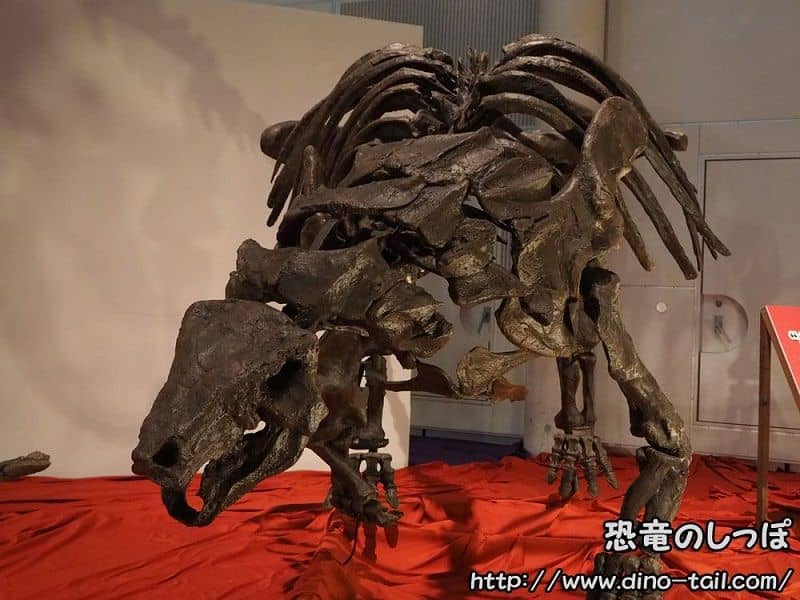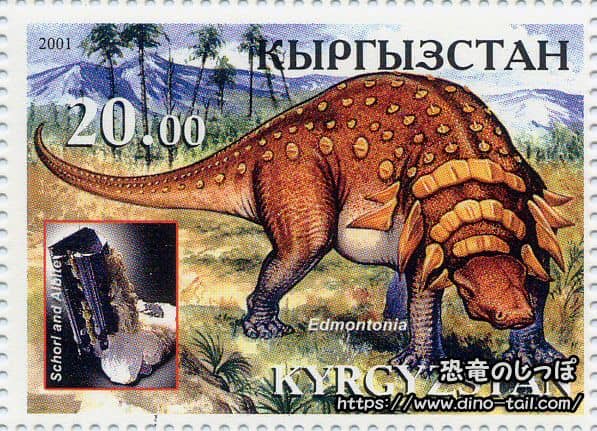About Edmontonia
| Scientific Name (Genus) | Edmontonia |
| Meaning of Name |
From Edmonton
Edmonton (Edmonton Formation) [Place Name] -ia [Latin suffix] |
| Classification | Ornithischia, Thyreophora (Ankylosauria, Nodosauridae ) |
| Total Length | Approx. 6 - 7m |
| Diet | Herbivorous |
| Period | Late Cretaceous (approx. 76.5-69 million years ago) |
| Species |
Edmontonia longiceps
Edmontonia rugosidens |
| Year of Paper Publication | 1928 |
| Genus Name Publication | Sternberg, C.M. (1928). A new armored dinosaur from the Edmonton Formation of Alberta. Transactions of the Royal Society of Canada, series 3, 22. |
Characteristics
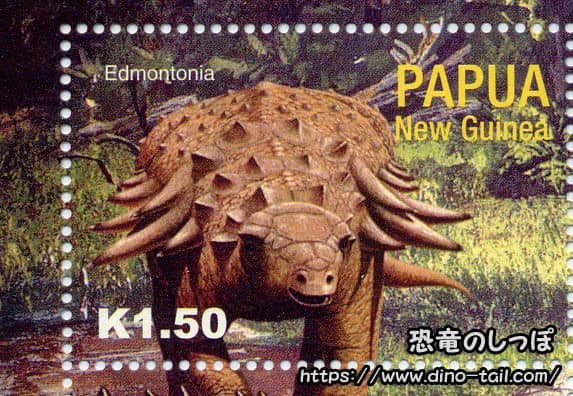
Edmontonia is characterized by the ossified dermal armor covering its body and the spike-like bones on its shoulders.
Its appearance gives the classic impression of an armored dinosaur.
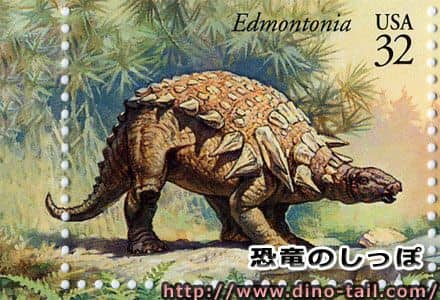
Edmontonia is classified within the "Nodosauridae" family of Ankylosauria. Unlike the "Ankylosauridae," which had a bony club at the end of their tails, a major feature of nodosaurids is the absence of a tail club. Instead, they developed very large and sharp spikes on their shoulders and body sides.
The spike-like bones on its shoulders may have been used for defense against carnivorous dinosaurs or in fights with its own kind (competing for mates or asserting territory).
Its underside was unarmored, leaving it vulnerable if flipped over.
With its low center of gravity, it might have defended itself by crouching down to the ground.
Also, for an armored dinosaur, Edmontonia had relatively long legs, suggesting it was faster than other Ankylosauria.
The relatively narrow shape of its snout suggests that it did not graze indiscriminately on ground vegetation but was a selective feeder, choosing nutritious ferns and young shoots.
Discovery and Publication
In 1915, Barnum Brown excavated the front half of an armored dinosaur in Alberta, Canada. It was a nearly complete skeleton with articulated joints.
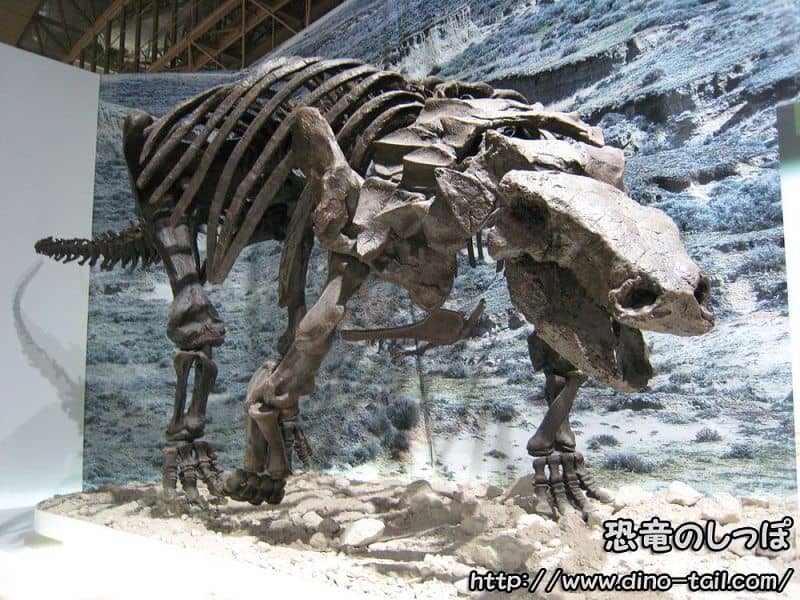
In the same year, the American Museum of Natural History acquired the specimen (AMNH 5381), and in 1922, William Diller Matthew introduced it in a scientific journal without identifying it as a specific species.
Meanwhile, in 1924, a team led by paleontologist Charles Mortram Sternberg of the Geological Survey of Canada discovered a skull and right lower jaw of the same type of armored dinosaur near Morrin, Alberta, in the Edmonton Formation. Based on this excavated specimen (NMC 8531), Charles Sternberg described the new genus and species Edmontonia longiceps in 1928. The genus name Edmontonia is derived from the Edmonton Formation where it was found.
The earlier specimen AMNH 5381 (excavated by Barnum Brown in 1915) was later classified as a new species belonging to Edmontonia, Edmontonia rugosidens, by Loris Shano Russell of the University of Toronto in 1940.
A Miraculous Fossil That Preserves Its Living Appearance
A very important discovery was made recently that helps us imagine what Edmontonia looked like in life. In 2011, a fossil of a very close relative of Edmontonia (a nodosaurid) named Borealopelta was discovered in Alberta, Canada.
This fossil was truly a "miracle fossil," preserving not only the bones but also the skin, keratinous sheaths, armor placement, and even stomach contents in three dimensions. This discovery has also suggested the possibility of countershading—that their backs were reddish-brown and their undersides were a lighter color. This may have been camouflage to hide from large carnivorous dinosaurs.
The appearance of Borealopelta is a precious time capsule that teaches us what Edmontonia might have looked like and how it lived.
Edmontonia Stamp & Fossil Gallery
